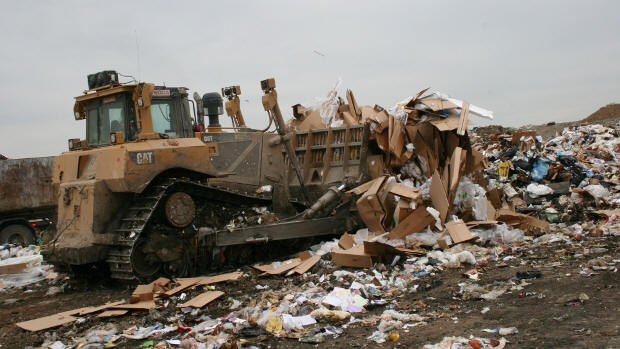 File: Shawn Wright, Waste & Recycling News
At least 4.36 million tons of corrugated
cardboard found its way into landfills in 2010, part of a total
value of landfilled paper of $1.3 billion, according to a new
report.
File: Shawn Wright, Waste & Recycling News
At least 4.36 million tons of corrugated
cardboard found its way into landfills in 2010, part of a total
value of landfilled paper of $1.3 billion, according to a new
report. In 2010, the value of packaging landfilled in the U.S. was worth $11.4 billion, according to a report released today.
The study, titled "Unfinished Business: The Case for Extended Producer Responsibility for Post-Consumer Packaging," was published by As You Sow, a nonprofit organization that promotes environmental and social corporate responsibility through shareholder advocacy, coalition building and legal strategies.
The information on the amount of packaging that was landfilled was taken from the U.S. EPA's 2010 municipal solid waste data.
"I really want this to be a resource to add to this debate that's beginning to happen on whether and how big consumer packaged goods companies should be taking responsibility for their packaging," said Conrad MacKerron, senior director of As You Sow and the report's author.
The report found that the highest value of discarded waste was PET, with a value of $2.9 billion landfilled in 2010. The EPA calculated that 2.6 million pounds of PET was discarded in landfills in 2010, which indicates that 23% of the PET generated that year was recycled.
"PET beat aluminum, in terms of the value of packaging," MacKerron said. "It kind of makes sense because I think we're getting about 50% of the aluminum cans, but we're only getting 25% or 30% of the PET bottles. … Those are kind of the major things that people recycle now."
Discarded aluminum was valued at $1.4 billion. Paper, including corrugated cardboard, was valued at $1.3 billion.
HDPE – items such as milk jugs and laundry detergent – was the second most valuable discarded recyclable, worth $2.8 billion.
In addition to having companies take responsibility for the recyclable material, the report also suggests that the U.S. should improve its waste collection infrastructure to capture a greater amount of post-consumer materials and develop closed-loop systems.
"I think that's one of the strong messages here is issues with our infrastructure, some issues with not really having enough curbside recycling for, I think, 25% of the population," MacKerron said. "We're still not getting those collected. There's quite a potential here that I think has been ignored for awhile of materials."
![]()
w w w . w a s t e r e c y c l i n g n e w s . c o m
copyright 2012 by Crain Communications Inc. All rights reserved.